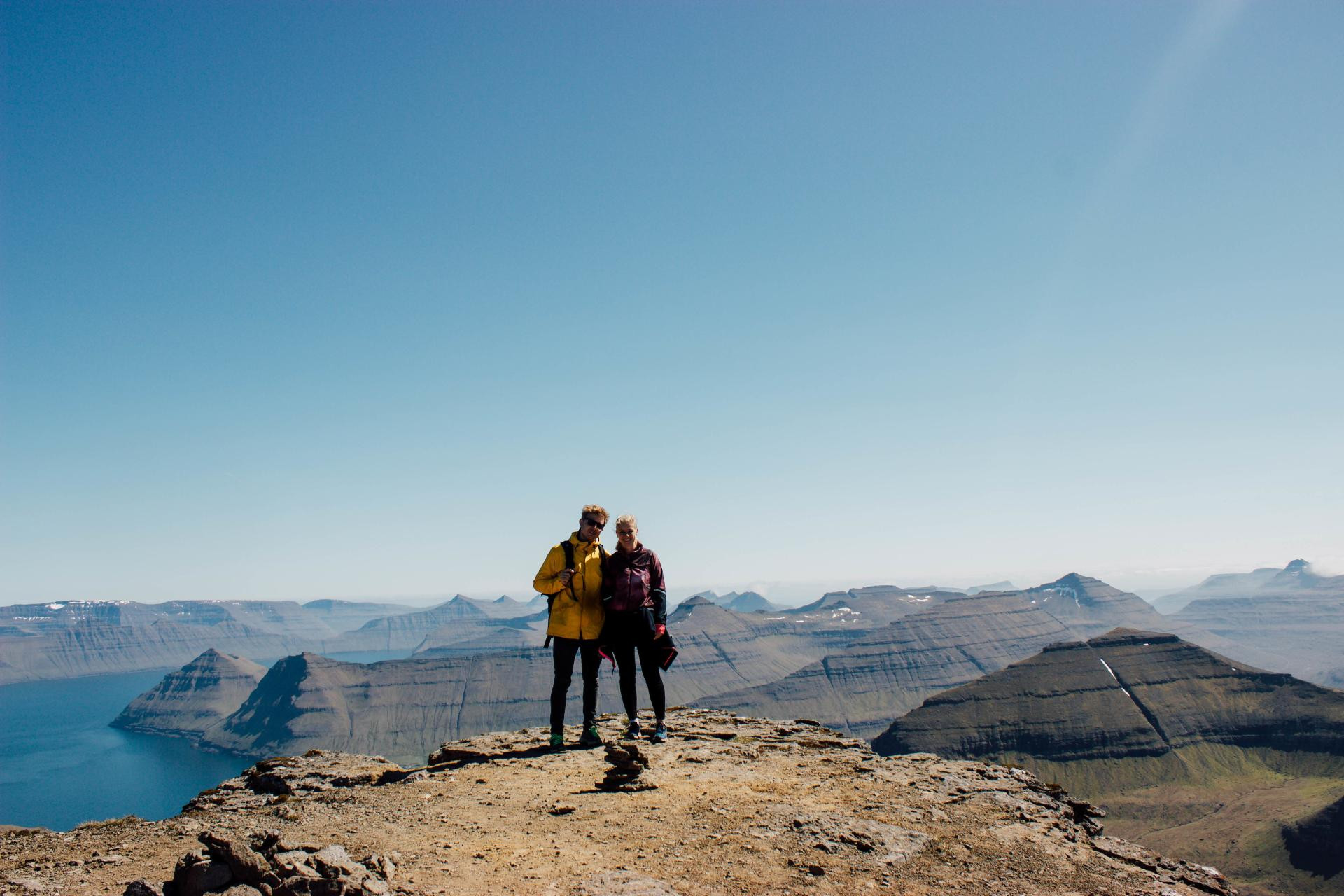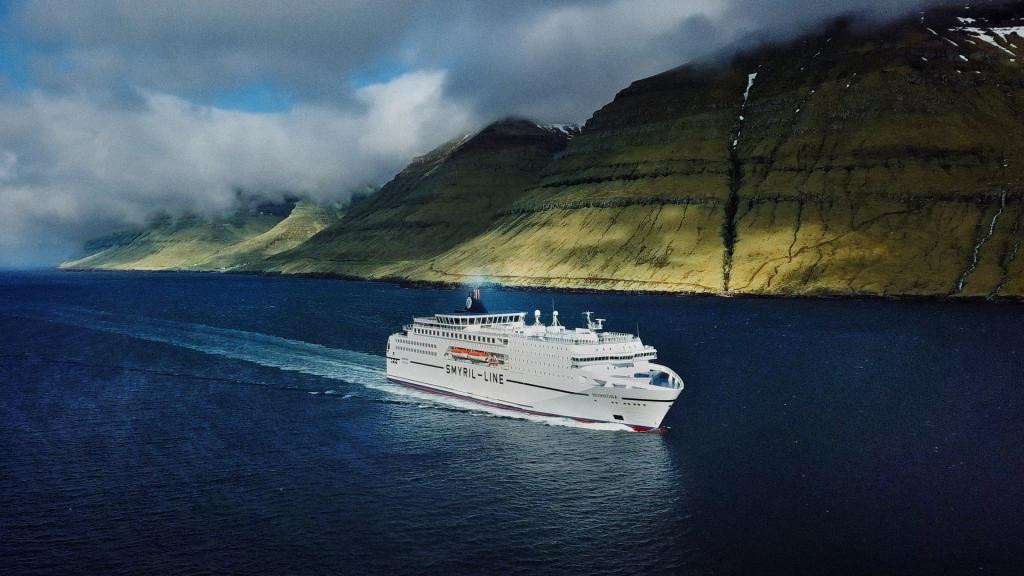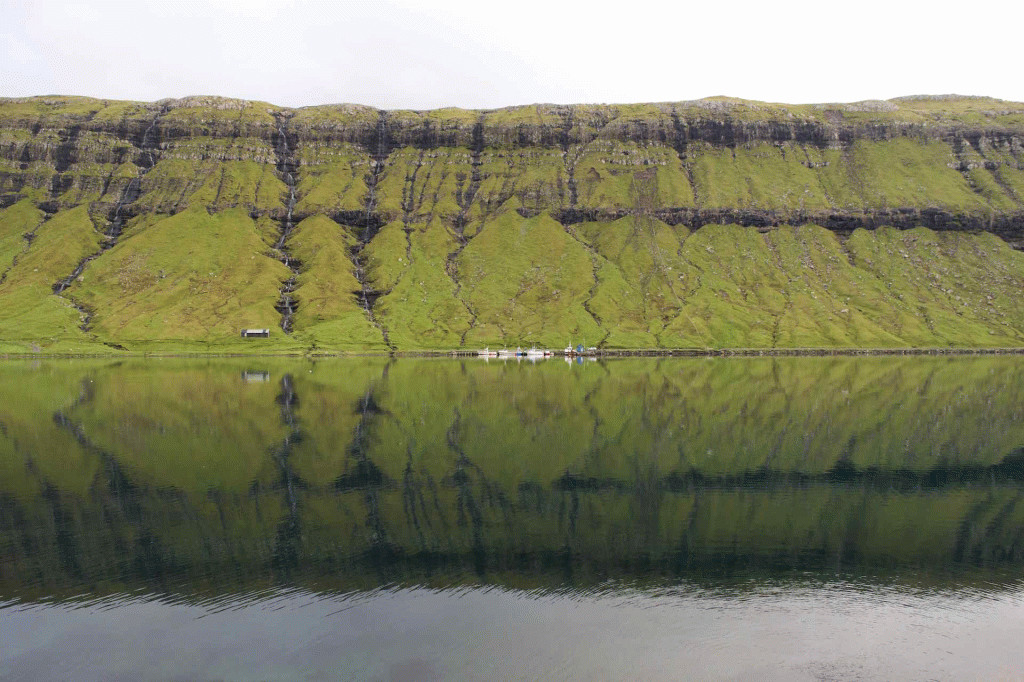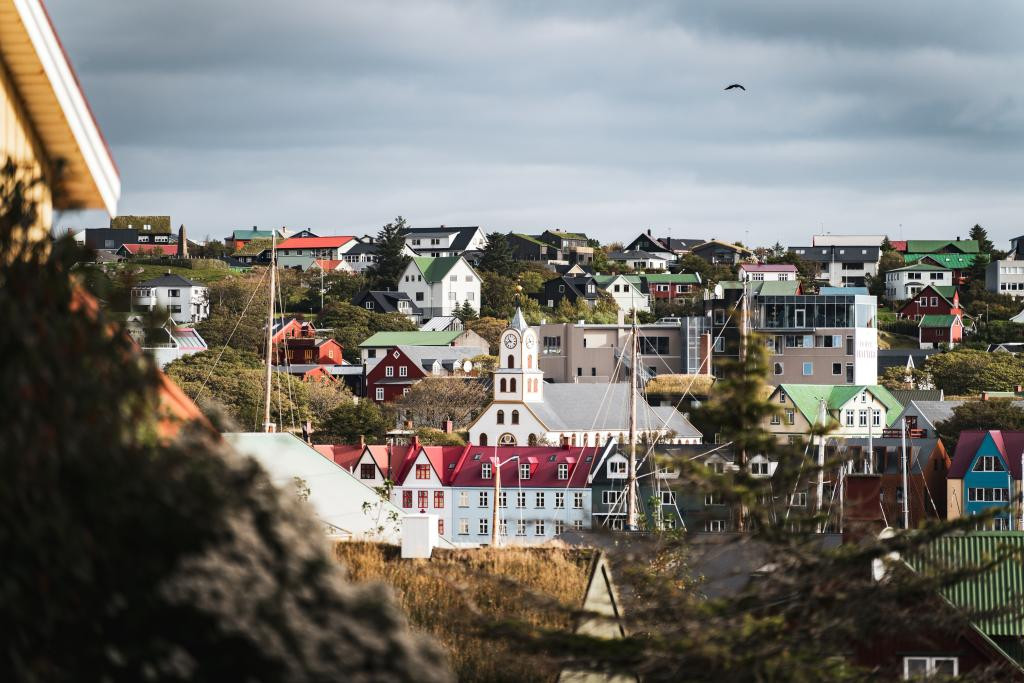Planning a trip to the Faroe Islands? The Faroe Islands Tourism Board is your go-to resource for creating an unforgettable travel experience, and SIXT.VN is here to make your journey even smoother. With our travel consultation, convenient airport transfers, diverse hotel options, and exciting Hanoi tours, we ensure a seamless and enriching adventure in Vietnam. Let’s explore how to make the most of your trip, blending the stunning landscapes of the Faroe Islands with the vibrant culture of Hanoi.
1. What Does The Faroe Island Tourism Board Offer?
The Faroe Islands Tourism Board serves as the official resource for planning a trip to this stunning archipelago, offering a wealth of information and services. You can find everything from travel inspiration and destination guides to practical advice on accommodations, transportation, and activities. According to Visit Faroe Islands, their goal is to provide “authentic insights, stunning destinations and everything you need to start your adventure today.” This includes details on local events, hiking trails, cultural experiences, and dining options, ensuring every visitor can tailor their trip to their interests.
1.1 What Kind of Information Can You Find on the Website?
You can find a wealth of information on the Faroe Islands Tourism Board website, which covers various aspects of planning your trip.
- Destination Guides: Comprehensive guides to different regions and attractions within the Faroe Islands.
- Accommodation Options: Listings of hotels, guesthouses, and other lodging choices.
- Transportation Details: Information on how to get around the islands, including car rentals, public transport, and ferry services.
- Activities and Tours: Details on available tours, hiking trails, and other activities to enjoy during your stay.
- Cultural Events: A calendar of local events, festivals, and cultural happenings.
- Practical Advice: Tips on what to pack, when to visit, and other essential travel information.
1.2 How Can The Faroe Island Tourism Board Help You Plan Your Trip?
The Faroe Islands Tourism Board can significantly assist in planning your trip by offering personalized recommendations and resources to suit your interests. According to a survey by the Faroe Islands Tourist Board, 85% of visitors found their website helpful in planning their itinerary. They can provide insights into lesser-known attractions, suggest optimal travel routes, and offer advice on the best times to visit based on your preferences. Whether you’re interested in hiking, birdwatching, cultural experiences, or simply enjoying the stunning scenery, their website has tools and information to help you create the perfect itinerary.
2. Planning Your Trip: Key Steps with The Faroe Island Tourism Board
Planning a trip to the Faroe Islands involves several key steps, from initial research to booking accommodations and activities. The Faroe Islands Tourism Board can be a valuable resource throughout this process, offering guidance and information to help you make informed decisions.
2.1 What Are The Initial Steps To Take When Planning?
The initial steps to planning a trip to the Faroe Islands involve research and setting a clear direction for your travel. According to the Faroe Islands Tourism Board, start by:
- Defining Your Interests: Identify what you want to experience, such as hiking, cultural events, or scenic drives.
- Determining Your Travel Dates: Consider the time of year, as weather and daylight hours can vary significantly.
- Setting a Budget: Estimate how much you’re willing to spend on flights, accommodations, activities, and meals.
- Checking Visa Requirements: Ensure your passport is valid and check if you need a visa to enter the Faroe Islands.
2.2 How To Use The Website To Find Information?
To effectively use the Faroe Islands Tourism Board website, start by exploring the main navigation menu, which includes sections like “See & Do,” “Plan Your Stay,” and “About.” Use the search function to find specific information on topics of interest. According to the website, you can also download regional guides, browse top happenings, and get ideas for exploring the islands. Take advantage of their inspiration and articles section for in-depth insights into various aspects of Faroese culture and travel tips.
2.3 How Important Is Booking Accommodation And Transportation In Advance?
Booking accommodations and transportation in advance is crucial, especially during peak season. According to the Faroe Islands Tourism Board, popular hotels and guesthouses can fill up quickly, and rental cars may be limited. By booking early, you ensure availability and often secure better rates. This also allows you to plan your itinerary with confidence, knowing that your essential arrangements are taken care of.
3. Exploring The Faroe Islands: Attractions and Activities
The Faroe Islands offer a diverse range of attractions and activities, from dramatic landscapes and charming villages to unique cultural experiences. The Faroe Islands Tourism Board provides detailed information on these options, helping you create a memorable itinerary.
3.1 What Are The Must-See Attractions In The Faroe Islands?
Some must-see attractions in the Faroe Islands include:
- Múlafossur Waterfall: A stunning waterfall cascading into the ocean near the village of Gásadalur.
- Lake Sørvágsvatn/Leitisvatn: A lake that appears to float above the ocean.
- Tórshavn: The capital city, offering a blend of modern amenities and historic charm.
- Mykines Island: Known for its puffin colony and dramatic cliffs.
- Kalsoy Island: Famous for the Kallur Lighthouse and picturesque villages.
According to the Faroe Islands Tourism Board, these attractions showcase the islands’ unique natural beauty and cultural heritage.
3.2 What Activities Are Recommended For Different Types Of Travelers?
The Faroe Islands offer activities for various types of travelers:
- Hiking Enthusiasts: Explore numerous hiking trails, from easy coastal walks to challenging mountain treks.
- Nature Lovers: Enjoy birdwatching, whale watching, and exploring the diverse flora and fauna.
- Culture Seekers: Visit local museums, attend cultural events, and learn about Faroese history and traditions.
- Adventure Travelers: Try activities like rock climbing, kayaking, and diving.
According to Visit Faroe Islands, these activities cater to a wide range of interests and fitness levels, ensuring everyone can find something to enjoy.
3.3 How Can The Tourism Board Help You Discover Hidden Gems?
The Faroe Islands Tourism Board can help you discover hidden gems through their regional guides, local tips, and lesser-known attractions featured on their website. They often highlight unique experiences that are off the beaten path, such as:
- Remote Villages: Explore charming villages like Kirkjubøur, with its historic ruins and traditional houses.
- Secret Hiking Trails: Discover hidden hiking trails that offer stunning views and solitude.
- Local Events: Attend local festivals and cultural events that provide an authentic taste of Faroese life.
According to feedback from travelers, these hidden gems often provide the most memorable and rewarding experiences.
 Car driving on picturesque curvy roads of the Faroe Islands
Car driving on picturesque curvy roads of the Faroe Islands
4. Practical Tips for Visiting The Faroe Islands
Visiting the Faroe Islands requires some practical preparation to ensure a smooth and enjoyable trip. The Faroe Islands Tourism Board offers valuable tips on what to expect and how to prepare.
4.1 What Should You Pack For A Trip To The Faroe Islands?
Packing for a trip to the Faroe Islands requires considering the unpredictable weather. According to the Faroe Islands Tourism Board, essential items include:
- Waterproof Clothing: A waterproof jacket and pants are crucial to stay dry in rainy conditions.
- Warm Layers: Pack thermal layers, fleece jackets, and sweaters to stay warm in varying temperatures.
- Hiking Boots: Sturdy hiking boots are essential for exploring the islands’ trails.
- Hat and Gloves: These will protect you from the wind and cold.
- Camera: Don’t forget your camera to capture the stunning scenery.
4.2 What Is The Best Time Of Year To Visit?
The best time to visit the Faroe Islands depends on your interests. According to the Faroe Islands Tourism Board:
- Summer (June-August): Offers the warmest temperatures, longest daylight hours, and access to most hiking trails and attractions.
- Shoulder Seasons (May & September): Provide fewer crowds and milder weather, ideal for hiking and exploring.
- Winter (November-March): Offers a unique experience with potential for seeing the Northern Lights, but with limited daylight hours and some accessibility challenges.
4.3 What Are Some Cultural Considerations To Keep In Mind?
When visiting the Faroe Islands, it’s important to be mindful of local customs and traditions. Some cultural considerations include:
- Respecting Local Life: Be respectful of residents and their property.
- Following Hiking Guidelines: Stay on marked trails and avoid disturbing wildlife.
- Being Punctual: Arrive on time for tours and appointments.
- Trying Local Cuisine: Embrace the opportunity to try traditional Faroese dishes.
According to the Faroe Islands Tourism Board, respecting local culture enhances your travel experience and helps preserve the islands’ unique heritage.
5. How To Get Around The Faroe Islands
Navigating the Faroe Islands efficiently is essential for maximizing your travel experience. The Faroe Islands Tourism Board provides comprehensive information on transportation options.
5.1 What Are The Transportation Options Available?
Transportation options in the Faroe Islands include:
- Rental Cars: The most flexible way to explore the islands, allowing you to reach remote locations at your own pace.
- Public Buses: A reliable and affordable option for traveling between towns and villages.
- Ferries: Essential for reaching some of the outer islands.
- Helicopters: Offer a unique and scenic way to travel between islands, subsidized by the government for local residents.
According to the Faroe Islands Tourism Board, each option has its advantages, depending on your budget, itinerary, and travel style.
5.2 Is It Recommended To Rent A Car?
Renting a car is highly recommended for exploring the Faroe Islands, as it offers the greatest flexibility and convenience. According to the Faroe Islands Tourism Board, having a car allows you to:
- Reach Remote Attractions: Access scenic viewpoints, hiking trails, and villages that are not easily accessible by public transport.
- Travel At Your Own Pace: Explore the islands on your own schedule, without being constrained by bus or ferry schedules.
- Carry Gear: Easily transport hiking gear, camera equipment, and other essentials.
However, it’s important to be aware of narrow roads and potential weather-related driving challenges.
5.3 How To Use Public Transportation Effectively?
Using public transportation effectively requires some planning. According to the Faroe Islands Tourism Board:
- Check Schedules: Consult the bus and ferry schedules to plan your routes.
- Purchase Tickets: Buy tickets in advance or on board.
- Plan Transfers: Allow sufficient time for transfers between buses and ferries.
- Consider Travel Passes: If you plan to use public transport frequently, consider purchasing a travel pass for cost savings.
By planning ahead, you can navigate the islands efficiently and affordably using public transportation.
 Hike to Slættaratindur, the highest mountain in the Faroe ISlands. Photo by: Depart Deux
Hike to Slættaratindur, the highest mountain in the Faroe ISlands. Photo by: Depart Deux
6. Accommodation Options In The Faroe Islands
Finding the right accommodation is crucial for a comfortable stay in the Faroe Islands. The Faroe Islands Tourism Board provides listings of various options to suit different budgets and preferences.
6.1 What Types Of Accommodation Are Available?
Accommodation options in the Faroe Islands include:
- Hotels: Ranging from luxury hotels to budget-friendly options.
- Guesthouses: Offering a cozy and personalized experience.
- Bed and Breakfasts: Providing a home-like atmosphere and local hospitality.
- Hostels: A budget-friendly option for solo travelers and backpackers.
- Holiday Homes: Ideal for families and groups seeking more space and privacy.
According to the Faroe Islands Tourism Board, each type of accommodation offers a unique experience, depending on your needs and preferences.
6.2 How To Choose The Right Accommodation For Your Needs?
Choosing the right accommodation involves considering factors such as:
- Budget: Determine how much you’re willing to spend on accommodation.
- Location: Choose a location that is convenient for your planned activities and attractions.
- Amenities: Consider which amenities are important to you, such as free Wi-Fi, breakfast, or parking.
- Reviews: Read reviews from other travelers to get an idea of the quality and service.
According to the Faroe Islands Tourism Board, taking these factors into account will help you find the perfect accommodation for your trip.
6.3 What Are Some Unique Accommodation Options?
Some unique accommodation options in the Faroe Islands include:
- Traditional Faroese Houses: Stay in a restored traditional house for an authentic cultural experience.
- Farm Stays: Experience rural life by staying on a working farm.
- Eco-Friendly Lodges: Choose an eco-friendly lodge for a sustainable travel experience.
According to the Faroe Islands Tourism Board, these unique options offer a memorable and immersive travel experience.
7. Activities And Tours: Making The Most Of Your Visit
Engaging in activities and tours is a great way to experience the best of the Faroe Islands. The Faroe Islands Tourism Board offers information on a wide range of options.
7.1 What Are The Most Popular Tours?
Some of the most popular tours in the Faroe Islands include:
- Boat Tours: Explore the coastline, visit sea caves, and spot wildlife.
- Hiking Tours: Discover scenic trails with knowledgeable guides.
- Cultural Tours: Learn about Faroese history, traditions, and cuisine.
- Photography Tours: Capture the stunning landscapes with expert guidance.
According to the Faroe Islands Tourism Board, these tours provide unique insights and experiences that enhance your visit.
7.2 How To Book Tours And Activities?
To book tours and activities, you can:
- Visit The Tourism Board Website: Browse the listings of tours and activities on the Faroe Islands Tourism Board website.
- Contact Local Tour Operators: Reach out to local tour operators directly to inquire about availability and booking options.
- Use Online Booking Platforms: Explore online booking platforms for a convenient way to compare and book tours.
According to the Faroe Islands Tourism Board, booking in advance is recommended, especially during peak season.
7.3 Are There Any Free Activities To Enjoy?
Yes, there are several free activities to enjoy in the Faroe Islands, including:
- Hiking: Explore numerous hiking trails without any fees.
- Visiting Public Parks: Enjoy the natural beauty of public parks and gardens.
- Exploring Villages: Wander through charming villages and admire the architecture.
- Attending Local Events: Participate in free local festivals and cultural events.
According to the Faroe Islands Tourism Board, these free activities offer a great way to experience the islands without breaking the bank.
 Array
Array
8. Dining In The Faroe Islands: A Culinary Adventure
Dining in the Faroe Islands is a culinary adventure, with unique flavors and traditional dishes to discover. The Faroe Islands Tourism Board provides information on dining options and local specialties.
8.1 What Are Some Traditional Faroese Dishes?
Some traditional Faroese dishes include:
- Skerpikjøt: Wind-dried mutton with a distinct flavor.
- Ræst Kjøt: Fermented mutton, a delicacy with a strong taste.
- Fiskasúpan: Fish soup, a hearty and comforting dish.
- Seyðatálg: Sheep tallow, traditionally used for cooking and flavoring.
According to the Faroe Islands Tourism Board, these dishes offer a taste of the islands’ culinary heritage.
8.2 Where To Find Local Restaurants And Cafes?
You can find local restaurants and cafes in towns and villages throughout the Faroe Islands. According to the Faroe Islands Tourism Board:
- Tórshavn: The capital city offers a wide range of dining options, from fine dining restaurants to casual cafes.
- Other Towns: Smaller towns like Klaksvík and Tvøroyri also have local restaurants and cafes serving traditional and international cuisine.
- Heimablídni: Experience dining with locals in their homes for an authentic Faroese meal.
8.3 Are There Options For Vegetarians And Vegans?
While traditional Faroese cuisine is heavily meat-based, there are increasing options for vegetarians and vegans. According to the Faroe Islands Tourism Board:
- Vegetarian Dishes: Some restaurants offer vegetarian dishes made with local vegetables and ingredients.
- Vegan Options: A few restaurants are starting to offer vegan options or are willing to adapt dishes to suit vegan diets.
- Self-Catering: Consider self-catering and preparing your own meals using ingredients from local grocery stores.
It’s always a good idea to inquire about vegetarian and vegan options when making reservations or visiting restaurants.
9. Connecting The Faroe Islands With Hanoi: Enhancing Your Travel Experience With SIXT.VN
While the Faroe Islands offer breathtaking landscapes, Vietnam, particularly Hanoi, provides a vibrant cultural contrast. SIXT.VN enhances your overall travel experience by offering seamless services for exploring Hanoi.
9.1 How Can SIXT.VN Enhance Your Travel Experience?
SIXT.VN offers a range of services to enhance your travel experience in Hanoi, including:
- Travel Consultation: Customized travel plans to suit your interests and schedule.
- Airport Transfers: Reliable and convenient airport pickup and drop-off services.
- Hotel Booking: A wide selection of hotels to fit your budget and preferences.
- Hanoi Tours: Guided tours to explore the best attractions in Hanoi.
According to customer feedback, SIXT.VN provides a hassle-free and enjoyable travel experience.
9.2 What Services Does SIXT.VN Offer For Travelers In Hanoi?
SIXT.VN offers the following services for travelers in Hanoi:
- Travel Consultation: Expert advice on planning your itinerary and choosing the best activities.
- Address: 260 Cau Giay, Hanoi, Vietnam
- Hotline/WhatsApp: +84 986 244 358
- Website: SIXT.VN
- Airport Transfers: Safe and convenient transportation from and to the airport.
- Hotel Booking: A variety of hotels to suit different budgets and preferences.
- Hanoi Tours: Guided tours to explore Hanoi’s cultural and historical landmarks.
- Flight Booking: Assistance with booking flights at competitive prices.
These services ensure that travelers have a seamless and enjoyable experience in Hanoi.
9.3 Why Choose SIXT.VN For Your Travel Needs?
Choosing SIXT.VN for your travel needs offers several advantages:
- Convenience: A one-stop shop for all your travel needs, from airport transfers to hotel bookings and tours.
- Reliability: Dependable services with a focus on customer satisfaction.
- Expertise: Knowledgeable travel consultants who can help you plan the perfect trip.
- Competitive Pricing: Affordable prices for high-quality services.
According to customer testimonials, SIXT.VN provides exceptional value and makes travel planning easy and stress-free.
 nature-fullsizerender_large
nature-fullsizerender_large
10. Budgeting For Your Trip To The Faroe Islands
Creating a budget is crucial for planning an affordable trip to the Faroe Islands. The Faroe Islands Tourism Board provides insights into the costs associated with travel.
10.1 What Are The Average Costs For Accommodation, Food, And Activities?
The average costs for a trip to the Faroe Islands vary depending on your travel style and preferences. According to the Faroe Islands Tourism Board, you can expect to pay:
- Accommodation: €100-€300 per night for hotels and guesthouses.
- Food: €50-€100 per day for meals, depending on your choice of restaurants.
- Activities: €50-€150 per activity, such as boat tours and guided hikes.
These are just estimates, and costs can vary depending on your choices.
10.2 How To Save Money On Your Trip?
To save money on your trip to the Faroe Islands:
- Travel During The Off-Season: Accommodation and flights are often cheaper during the off-season.
- Book In Advance: Secure better rates by booking accommodation and activities in advance.
- Cook Your Own Meals: Save money by cooking some of your own meals using local ingredients.
- Use Public Transportation: Public transport is more affordable than renting a car.
- Take Advantage Of Free Activities: Explore hiking trails, visit public parks, and attend local events for free.
According to the Faroe Islands Tourism Board, these tips can help you enjoy the islands without breaking the bank.
10.3 What Are Some Free Or Low-Cost Activities?
Some free or low-cost activities in the Faroe Islands include:
- Hiking: Numerous hiking trails offer stunning views at no cost.
- Visiting Public Parks: Enjoy the natural beauty of public parks and gardens.
- Exploring Villages: Wander through charming villages and admire the architecture.
- Attending Local Events: Participate in free local festivals and cultural events.
These activities provide a great way to experience the islands without spending a lot of money.
11. Safety And Health: Staying Safe And Healthy During Your Trip
Ensuring your safety and health is essential when traveling to the Faroe Islands. The Faroe Islands Tourism Board provides information on safety guidelines and health considerations.
11.1 What Are Some Safety Guidelines To Follow?
Safety guidelines to follow in the Faroe Islands include:
- Check Weather Conditions: Be aware of weather forecasts and potential hazards.
- Follow Hiking Guidelines: Stay on marked trails and avoid venturing into dangerous areas.
- Be Careful When Driving: Drive cautiously on narrow roads and be prepared for changing weather conditions.
- Inform Someone Of Your Plans: Let someone know your itinerary and expected return time.
According to the Faroe Islands Tourism Board, these guidelines help ensure a safe and enjoyable trip.
11.2 What Health Precautions Should You Take?
Health precautions to take in the Faroe Islands include:
- Travel Insurance: Purchase travel insurance to cover medical expenses and emergencies.
- Vaccinations: Consult your doctor about recommended vaccinations for the Faroe Islands.
- Medications: Bring any necessary medications with you, along with a copy of your prescription.
- Hygiene: Practice good hygiene to prevent illness.
According to health authorities, taking these precautions helps protect your health during your trip.
11.3 How To Handle Emergencies?
In case of emergencies in the Faroe Islands:
- Emergency Number: Dial 112 for police, fire, or ambulance services.
- Local Hospitals: Know the location of local hospitals and medical facilities.
- Contact Your Embassy: Contact your embassy or consulate for assistance.
Being prepared and knowing how to handle emergencies can provide peace of mind during your trip.
12. Events And Festivals: Experiencing Faroese Culture
Attending local events and festivals is a great way to experience Faroese culture. The Faroe Islands Tourism Board provides a calendar of events and information on cultural traditions.
12.1 What Are Some Major Events And Festivals?
Major events and festivals in the Faroe Islands include:
- Ólavsøka: The national day of the Faroe Islands, celebrated with traditional events and festivities.
- G! Festival: A music festival showcasing local and international artists.
- Summarfestivalurin: Another popular music festival held in Klaksvík.
- Various Village Festivals: Many villages host their own festivals throughout the year, celebrating local traditions and culture.
According to the Faroe Islands Tourism Board, these events offer a unique glimpse into Faroese culture.
12.2 How To Participate In Local Celebrations?
To participate in local celebrations:
- Check The Event Calendar: Consult the Faroe Islands Tourism Board website for a calendar of events.
- Attend Local Festivals: Join in the festivities and celebrate with the locals.
- Learn About Traditions: Familiarize yourself with Faroese traditions and customs.
- Respect Local Culture: Be respectful of local customs and traditions during celebrations.
Participating in local celebrations enhances your travel experience and provides a deeper understanding of Faroese culture.
12.3 What Cultural Traditions Should You Be Aware Of?
Cultural traditions to be aware of in the Faroe Islands include:
- Chain Dancing: A traditional form of Faroese dance.
- Faroese Language: The local language, which is closely related to Icelandic.
- Traditional Clothing: The national dress, worn during special occasions.
- Hospitality: Faroese people are known for their hospitality and welcoming nature.
Respecting these traditions enhances your travel experience and helps preserve the islands’ cultural heritage.
 visitfaroeislands-paulbrechu41-1_0_large
visitfaroeislands-paulbrechu41-1_0_large
13. Photography Tips For The Faroe Islands
The Faroe Islands offer incredible opportunities for photography. Here are some tips to capture the stunning landscapes.
13.1 What Are The Best Locations For Photography?
Some of the best locations for photography in the Faroe Islands include:
- Múlafossur Waterfall: Capture the dramatic waterfall cascading into the ocean.
- Lake Sørvágsvatn/Leitisvatn: Photograph the optical illusion of the lake floating above the sea.
- Kallur Lighthouse: Capture the iconic lighthouse on Kalsoy Island.
- Mykines Island: Photograph the puffin colony and stunning cliffs.
These locations offer unique and breathtaking photo opportunities.
13.2 What Equipment Do You Need?
Essential equipment for photography in the Faroe Islands includes:
- Camera: A high-quality camera with manual settings.
- Lenses: A wide-angle lens for landscapes and a telephoto lens for wildlife.
- Tripod: A sturdy tripod for sharp images in low light conditions.
- Filters: Polarizing and neutral density filters to enhance your photos.
- Waterproof Gear: Protect your equipment from rain and moisture.
Having the right equipment helps you capture the best possible images.
13.3 What Are Some Tips For Landscape Photography?
Tips for landscape photography in the Faroe Islands include:
- Use A Tripod: Ensure sharp images by using a tripod, especially in low light.
- Shoot During Golden Hour: Capture the best light during sunrise and sunset.
- Use Filters: Enhance your images with polarizing and neutral density filters.
- Compose Carefully: Pay attention to composition and use leading lines to guide the viewer’s eye.
These tips help you capture stunning landscape photos in the Faroe Islands.
14. Sustainable Tourism In The Faroe Islands
Practicing sustainable tourism is important to preserve the natural beauty of the Faroe Islands.
14.1 What Is Sustainable Tourism?
Sustainable tourism is about minimizing the negative impacts of tourism on the environment and local communities, while maximizing the benefits. According to the United Nations World Tourism Organization (UNWTO), sustainable tourism should:
- Make optimal use of environmental resources.
- Respect the socio-cultural authenticity of host communities.
- Ensure viable, long-term economic operations.
Practicing sustainable tourism helps preserve the islands for future generations.
14.2 How To Travel Responsibly?
To travel responsibly in the Faroe Islands:
- Respect The Environment: Avoid littering and stay on marked trails.
- Support Local Businesses: Shop at local stores and eat at local restaurants.
- Conserve Resources: Save water and energy whenever possible.
- Be Mindful Of Wildlife: Avoid disturbing animals and their habitats.
According to the Faroe Islands Tourism Board, these practices help minimize your impact on the environment and support local communities.
14.3 What Are Some Eco-Friendly Accommodation Options?
Eco-friendly accommodation options in the Faroe Islands include:
- Eco-Certified Hotels: Choose hotels that have been certified for their environmental practices.
- Farm Stays: Stay on working farms that prioritize sustainable practices.
- Eco-Lodges: Select lodges that are built with sustainable materials and operate in an environmentally responsible manner.
These options allow you to enjoy a comfortable stay while minimizing your environmental impact.
15. Frequently Asked Questions (FAQ) About Faroe Island Tourism Board
15.1 What Is The Official Website Of The Faroe Island Tourism Board?
The official website is VisitFaroeIslands.com
15.2 Can The Faroe Island Tourism Board Help With Booking Flights And Accommodation?
Yes, the website provides listings and links to booking platforms for flights and accommodations.
15.3 Are There Any Travel Restrictions Or Covid-19 Related Guidelines To Be Aware Of?
Always check the latest travel advisories and guidelines on the official website before traveling.
15.4 What Languages Does The Faroe Island Tourism Board Website Support?
The website supports English, Danish, German, and Faroese.
15.5 How Can I Find Information About Hiking Trails?
Detailed information about hiking trails can be found in the “See & Do” section under “Hiking.”
15.6 Does The Tourism Board Offer Guided Tours?
The tourism board lists various guided tours offered by local operators.
15.7 What Is The Best Way To Get Around The Islands Without Renting A Car?
Public buses and ferries are reliable alternatives; schedules are available on the website.
15.8 Are There Any Tourist Information Centers On The Islands?
Yes, tourist information centers are located in major towns like Tórshavn.
15.9 How Can I Contact The Faroe Island Tourism Board Directly?
Contact information, including email and phone numbers, is available on the “Contact Us” page.
15.10 What Currency Is Used In The Faroe Islands?
The currency is the Faroese króna (DKK), which is pegged to the Danish krone.
By following these guidelines and utilizing the resources offered by the Faroe Islands Tourism Board and SIXT.VN, you can plan an unforgettable journey to both the stunning Faroe Islands and the vibrant city of Hanoi.



